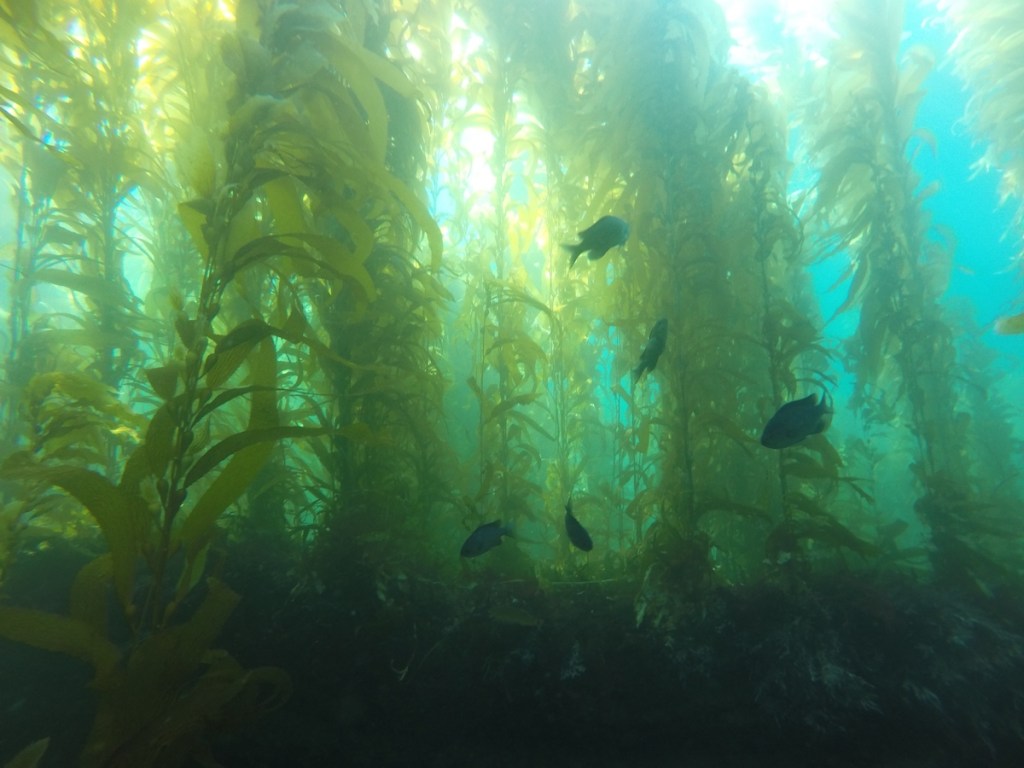After scouring 20 years’ worth of data, four UCSB-affiliated researchers discovered that nitrogen, an essential nutrient for giant kelp, had declined by 18 percent in the kelp populating the Santa Barbara Channel. This was concerning because so many species need kelp for food or shelter, both in the ocean and on land. The researchers concluded the decline was directly tied to warming oceans after comparing their analysis of kelp nutrient content with records of changes in water temperature at the university’s Coastal Long-Term Ecological Research sites in the Santa Barbara Channel.
Giant kelp gains nitrogen and other nutrients by pulling them from upwells of deeper, colder waters, but rising temperatures could potentially jeopardize this process. “Upwelling occurs less in warmer waters, particularly during the summer and fall seasons,” said Heili Lowman, one of the study authors, who is now at the University of Nevada, Reno. “Furthermore, organisms [expend more energy] in warmer temperatures, which means that organisms competing for nutrients near the shore need to take up available nutrients far more quickly.”
A decline in kelp nutrition is particularly worrying, Kyle Emery stressed, because of the giant kelp’s role as a foundation species within many coastline habitats. “Kelp provides food and shelter for a myriad of other organisms,” he said. “Those include marine organisms such as fish, lobsters, and urchins, as well as land-based organisms like shore birds and beetles.” Emery, with Lowman, Jenifer Dugan, and Robert Miller of UC Santa Barbara’s Marine Science Institute, published their findings in the science journal Oikos in October.
Though kelp doesn’t visibly exhibit signs of poor health, the effects are widely felt. “The decline of nutrients in kelp has the potential to cause shortages across the food web,” Lowman explained. “[Organisms in the kelp forest] may compensate for lower nutritional quality by eating more food to achieve the same nutritional benefits or switching their diet, but organisms on the beach are dependent solely on what washes ashore.” And those are some of the species most directly affected by nitrogen-deficient kelp; the reverberations may reach further still, touching those predators that must potentially hunt for smaller, less healthy populations of kelp-feeders.
Sign up for Indy Today to receive fresh news from Independent.com, in your inbox, every morning.
Even if some underwater organisms can adapt to the changes, their efforts come at a cost; searching for more algae to eat expends more energy. Moreover, over-harvesting of kelp often leads to the mowing down of entire kelp forests, leaving in its wake “urchin barrens,” large expanses of ocean floor completely covered by urchins that have devoured the kelp.
The overall biomass of giant kelp is not yet cause for panic, said Lowman. “Kelp forest growth is highly dynamic and can regenerate quickly. Sometimes they might even appear to blink on and off [when looking at data-based graphics over time].” If trends remain on course, however, more serious problems may arise.
“Kelp relies on nitrogen to regenerate and grow,” said Emery. “A sustained decline in available nutrients would slow the whole process. We don’t know yet where the threshold of no return is, but going forward it is very important to link nutritional kelp with water temperature.” Lowman added that fluctuations of nitrogen level have a more pronounced effect on giant kelp than on other plants. “Kelp can only store nitrogen for a couple of weeks. With finite reserves, kelp may not be able to weather increasingly long periods during which waters are warm and less nutrients are available,” she said.
For now, the researchers’ main concern is that despite the relative stability of giant kelp biomass, the average specimen’s nutritional quality has been declining. While kelp forests have been affected by factors such as oil spills, their primary objective was to find a long-term cause of nutritional decline. “We had an incredible data set to work with,” said Emery. “The utility of data collected over 20 years is that it filters out more periodic and isolated events, allowing us to focus on the main target.” There is yet more work ahead; with the red flag now raised, the four researchers plan to conduct additional research on how severe and far-reaching the effects are.
Support the Santa Barbara Independent through a long-term or a single contribution.

